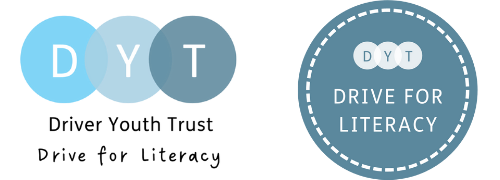Cultural change: making a classroom SEND friendly is more than a checklist
17/9/2018
As the new academic year begins, DYT’s literacy and inclusion experts have been travelling up and down the country to deliver inset and start our 2018/19 cohort on their Drive for Literacy journey. One of these experts, Kelly Challis, reflects on the first challenge of the new school year – how to create the definitive list of classroom strategies.
Last week I delivered a training session on identifying and addressing the four areas of SEND. These being, for those without a copy of the Code of Practice in their back pocket:
- Communication and Interaction,
- Cognition and Learning,
- Physical and/or Sensory and
- Social, Emotional and Mental Health.
The whole school teaching and support staff identified on large pieces of paper the different barriers to teaching and learning. They then discussed how to address the top three of each need. My job was then to consolidate these findings into a handy, SHORT list for their classes and to return the following week to share this with staff.
As I stuck the large, jam packed sheets on to my bedroom walls problem number one became clear; there were 108 different difficulties identified across the four areas. 108 individual behaviours or barriers to the teaching and learning in the classroom of a secondary school.
How was I going to narrow this down to make a useful list? Each need was important or it wouldn’t have been included and it would have been arrogant of me to assume I knew which were most important. I had asked the staff to circle anything on the lists they agreed with so I had some idea of which areas were most pertinent and these areas would be addressed in more detail in further CPD sessions but even if being generous, this would reduce the list to a little less than 100. This was still way too many barriers to address in a pocket size guide. A quick search of the internet and I soon had various lists of strategies, classroom dos and don’ts and even a top ten from Jules Daulby on addressing dyslexia in the classroom. Yes! I thought, I won’t need to think for myself at all, I have all the information I need at my fingertips. All I need to do is make it look pretty and draw it all together. I was wrong. This has proved to be one of the most difficult tasks I have ever set myself.
The list I began creating started to creep over 20 items then 30 then 40 until I had a list of the MOST important things to do in the classroom to address SEND. This list totalled more than 50. Not good. This was going against all the top tips of keeping things concise, giving instructions in short bursts and as a practitioner, I like to practise what I preach!
I decided to look at separating the strategies into different sections such as the classroom set up, getting your message across, communication etc. This resulted in eight subsections. It was starting to look like a code of practice itself and far removed from my intention of making it simple for the staff in the classroom.
It was Friday and I had a busy weekend ahead and was still no closer to finalising something to hand out on Monday. I turned to Twitter for some ideas and got some great pointers and an approach started to emerge. Every strategy in the classroom should be building capacity for independence. Unfortunately I had just added to my already overpopulated list.
The weekend was fantastic, full of fun and laughter and one which I thoroughly enjoyed. Sunday afternoon however, was crunch time. I was due into the school at 8.30 the following morning. Whether it was tiredness or the looming deadline of not being able to do any more I had a realisation. This was not a list I was going to be able to deliver tomorrow morning. It is not possible to provide a list which will transform classroom practice to being SEND friendly overnight. It is a fundamental change in the culture of the school that supports a list of such strategies. I therefore went into the meeting today with an explanation, each term there would be a two areas to focus on in the classroom and suggested changes that could be made. Reviewing and reflecting on these practices would further narrow down an approach which suited the school.
On reflection, two things struck me which supersede the need for a list of strategies; an inclusive culture and responsive teaching. Perhaps, in essence that’s all a list for the classroom needs.

